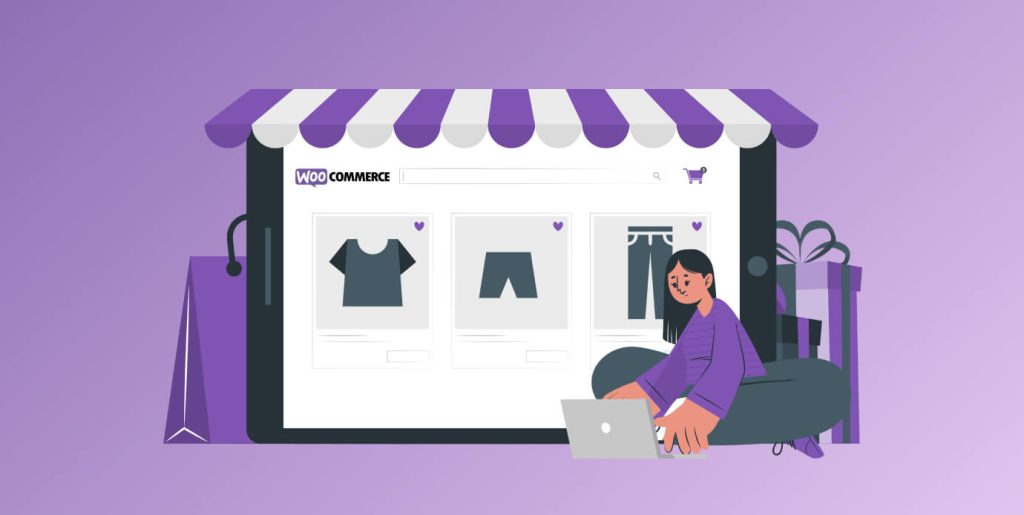Increase Conversion Rate with The Proven WooCommerce Search Strategies

Whether you’re starting an eCommerce business or a seasoned online seller, the higher your conversion rates, the better off your company will be.
If everything went according to plan, you could generate business from both new and recurring customers. If you’d ask store owners what they want, they would want to convert all the visitors into their customers.
So, what would be a perfect scenario?
- Customers are coming to your store.
- Then, they’re finding the products they want and add them to their cart.
- Finally, they’re going through the checkout process without any hesitation.
It may sound like a utopian dream to every store owner, but it is not impossible. The truth is that the vast majority of your store’s visitors will leave without purchasing anything.
Attracting visitors to your store can be simple, but visitors who do not make purchases do not generate revenue for your company. Every WooCommerce store owner can use the WooCommerce search strategies to turn their store visitors into their customers.
Let’s see how it’s done to increase the conversion rate.
Optimize Your WooCommerce Search Strategies

Better search functionality on your WooCommerce store could significantly improve conversion rates. Let’s take a look at some best practice tips for WooCommerce product searches.
Make Sure People Notice The Search Box
Customer experience depends greatly on navigation. Your visitors should be able to easily locate the products they’re looking for. Regardless of whether you put the search box for your online store above, below, or off to one side, putting it where most people expect to see it will help increase its chances of success.
An online store’s navigation bar will typically contain categories and subcategories that allow visitors to browse your WooCommerce store by selecting from various options. Sometimes, this can help but can leave too much workload for the user. When users cannot understand your store’s categories, they may get confused.
One way to solve this problem would be to create a useful search field on your store. If you just keep a text box hidden in one part of the page, however, it won’t help. You must put it somewhere prominent on the homepage and encourage people to click through to it.
Using an attractive color scheme, contrast the overall color tone of the WooCommerce store with its background, and it can attract more visitors. Furthermore, if you keep some text in the search box so that users know what they’re looking for, it will be easier for them to find it.
Additionally, the results should be organized so that they help users to distinguish between different products. Include useful information that would motivate your visitors to buy from your WooCommerce store.
Help Users with Autocomplete Suggestions
You should always offer variations for your product names even before a user types them into the search bar. Customers would be happier if the products they’re looking for were available inside your store.
You can improve your WooCommerce store’s search engine ranking by optimizing your eCommerce website for potential long-tail keywords your visitors might be searching. This is particularly important if your WooCommerce store has multiple brands, products, and variations to offer.
Filter Option for Showing Search Results
WooCommerce customers tend to be impatient when they’re searching for products online. Therefore, it’s important to provide some excellent filtering options for people to use when narrowing down their search results. It’s especially important if one of your products has a lot of different variations.
Users should be able to filter results by category, price range, brand, etc. There are no obvious sorting choices for products based on their attributes. Once users will get comfortable using your store, they’re more likely to return. Here’s where the magic happens.
Respond to Searches Professionally
Longer keywords mean that the searcher wants specific results. Any store that is trying to improve its search engine rankings should use these techniques. If your WooComerce store ranks well for such long-tail keywords, there are more opportunities that users will find useful content there. It applies to any type of search query.
You need to ensure that your product descriptions, titles, categories, and any other product attributes are searchable. Include all the possible keywords related to a product at different levels (e.g., brand name, generic term, category).
Store visitors who use specific keywords are more likely to be serious customers. As a result, they must want their specific product. This will help you in reducing shopping cart abandonment.
Use of Breadcrumbs
Breadcrumb is a great solution for suggesting to land on a product page. It helps customers to reach their destination without spending much time roaming inside your WooCommerce store.
This is an organized way to help customers to reach the appropriate way for their search flow.
Why WooCommerce Shoppers Don’t Convert

However, before we dive into a discussion of these strategies and tips, we need to understand the reasons. Like why an individual might decide to leave your WooCommerce store empty-handed in the first place.
Realistically speaking, there are many reasons why consumers choose not to purchase at a given point in time. For example:
- Your WooCommerce store makes a poor first impression.
- You have no idea who you’re selling to.
- Your store isn’t optimized.
- You ignore mobile users.
- Nobody understands your product.
- Images are mediocre at best.
- Your content isn’t convincing.
- The website is distracting.
- The call to action is vague.
- Shoppers do not trust you.
- People must pay for shipping.
- Shoppers do not trust you.
- You’re not utilizing exit intent.
- There is no re-marketing or re-targeting strategy in place.
Not only does having this understanding allow you to anticipate and avoid making these same mistakes. It also proves to you that making these mistakes doesn’t necessarily mean you’ve failed. As long as you understand why you made the mistake, and how to go about fixing it, your business will continue to improve daily.
Increase Conversion Rate Using WooCommerce Store Search

Getting better results for your WooCommerce store is often about making small tweaks and changes.
We need to make one rule about this heading. Visitors who use search convert more often and spend more money when they find what they want easily and quickly. The reason for this increase in conversions is simple. Searchers are at different places in the buying journey. They already know what they want to buy. Your WooCommerce websites need to ensure they find it quickly and easily.
Some steps might require specialized software or support, but there’s guaranteed to be something in this list you can do today to make your store more profitable.
Get Better Data to Make Better Decisions
eCommerce is highly competitive, and everyone is looking for an edge. Your customers can give you the ultimate edge. They will tell you what they want to buy. All you have to do is listen to them and then sell them what they want.
Here’s the simple action you can take today to get better results:
Record and analyze your WooCommerce store’s search data to discover sales possibilities.
Your search customers are telling you what they want to buy. If you don’t record and analyze store search data, then you’re not listening to these customers. Here are some ways you could use the store’s search data to your advantage:
- Searches that lead to no results can show you new products you could be selling.
- Tracking trends in search can help you plan product listings to capitalize on trends.
- Demographic data, such as location, language, age, and gender of searchers can lead to much more accurate targeting of ads.
Better data leads to better decisions, so start collecting and analyzing your data today.
Help Customers Begin Their Search with Visible and Consistent Search Boxes
Internet users are not patient people. They don’t want to search for your store’s search box. Make it visible on every page. As your store becomes more complex, this becomes increasingly necessary.
Thankfully, improving the visibility of your s search box is simple. Here are the five steps toward a great search box:
- Position it in a normal place. The top center or top right are the normal places. Don’t put it somewhere else without a very, very good reason.
- Give your search box some space. Don’t cram it next to a newsletter sign-up button or other fields. Leave space so it stands out.
- Provide a visual clue. Use a small magnifying glass to show visitors the purpose of your box. If you prefer, you can add a button like “GO” instead.
- Start with a full-text field. A full-text field is a strong signal about the search box. Most searches fit into a 27-character text box.
- Get the starting action right. Users prefer to hit ‘Enter’ to start their searches, so make sure this works. You can also include a button or icon to launch the search for those who like this method.
These five things will make your search box stand out to your customers.
Use Intelligent Search Autocomplete with Autocorrect
The goal of WooCommerce search, from the store owner’s perspective, is to match customers to products. Autocomplete can be very effective because it generates search terms that will always lead to products. Autocorrect complements autocomplete by eliminating spelling errors or language inconsistencies.
You can function your WooCommerce store better with –
- Display the autocomplete’s suggested terms differently using italics, boldface, or a different font.
- Use an intentionally short list to avoid overwhelming customers – especially on mobile devices.
- Add visual cues to show ‘scoped searches.’ When you’re suggesting a search within a department, make this clear.
- Maximize focus on the search box when autocomplete is active. Use shadows on the rest of the page and avoid clutter with other elements.
There are many other tweaks you can make to your auto-complete function. Use this function to lead customers directly to your products.
Allow Visitors to Search in Different Product Categories
Remember, the goal is to help searchers find what they want quickly and easily. You can add department or section filters to your search box. A simple filter menu on the left side of the search box can let your users search the entire store or within a specific department.
Helping your customers narrow down their search will give them better results. Better results mean more sales.
Use Faceted Search to Maximize Search Efficiency
Facets are the details of your products. Some examples of facets include shoe size, product color, and brand name. Give your customers access to these facets as filters to make their search more efficient.
Customers who quickly find what they want to become buyers. Faceted search helps these customers target their searches intuitively.
Optimize Your Search for Mobile
Store search for mobile devices should conform to the smaller screen size and lack of a keyboard for text input. Here are a few ways to help your mobile visitors:
- Make the search function obvious on the screen so the shopper can find it easily.
- Store recent searches and allow users to see their search history because this saves the customer on data entry time.
- Use scan and autofill options because people want to save time. Location, credit card scanning, and autocomplete can all help achieve an easier experience for your customer.
We’ve written an entire guide called “The Ultimate Guide to Mobile App Design.” You can check out the chapter on Product Search and Form Entry for more tips.
Place Ads and Suggest Products
Keeping your data and analyzing it to understand your customers is vital.
Once you start moving products around, promoting specific items, and attempting to influence your customers, monitor the results. Hence, you know what is working and what may be driving customers away.
The strategies you can implement:
- Move new items or on-brand products to the top of the list because customers may be more interested in these than the item they searched for first.
- Use embedded product suggestions because this is a shortcut to a purchase. Think of it as autocomplete at the next level. Don’t just suggest a search term, suggest the best item.
- Add promotional banners near the search bar because customers looking for the search bar will see the banner.
Optimize Your Search Result Pages
Getting results from a search is only the first step toward a purchase. Customers want to find specific items quickly. You can help them by tweaking your search results pages.
There are some visual changes you can make to improve your results page. Try to use the same fonts and text sizes on all the search results. Add dynamic thumbnails to display the best product variation (such as black shirts) to the customer.
You can also implement changes to the way users interact with the search results. Infinite scrolling is better than loading new pages. A floating filter menu that remains visible when the user scrolls are far better than one that disappears during scrolling. Of course, using related searches and filtering are also top priorities.
Never Waste Any Results Page
You can do better by using 404, or no results pages, to build more trust with your customers.
The primary goal of a good no results page is not to let go of the customer’s hand. You’ve been with them for the first part of their shopping journey. Now, they’ve hit a little barrier. Don’t let go of a generic no results page. Give them some options and help them feel empowered.
There is a simple three-step formula for dealing with a no-results search.
- Explain what happened clearly because your customer might overlook the “No Results” message if it is the first line on the page.
- Apologize for the outcome and take responsibility for helping because this will reassure your customer.
- Suggest so your customer feels there is an option that helps them move forward. Suggest a related search query, a similar product, or even a contact method like phone, email, or chat.
The goal is to give your customer a feeling of possibility. If they feel the right product is within their reach with just a little more effort, they’ll stick around.
Optimize Your Search Data Infrastructure
Your customers will never see the infrastructure supporting their search functions. You should see this information and structure regularly. Let’s repeat the simple rule we explained earlier:
Keep your data and analyze it to understand your customers.
Your customers will tell you critical information about which products they like, which ones they won’t buy, and how appealing your offers are to them. If your store’s search ranking infrastructure is poor, you won’t be able to find the information your customers are giving you.
Here are a few quick things you can monitor:
- Frequently searched terms.
- Searches with low CTR.
- Performance of top-listed products.
Monitoring these things will give you a superb view of what your customers want. If you can’t easily track these items, then consider a SaaS product that will help you.
Personalize Your WooCommerce Store Search
WooCommerce store search personalization is like going to the hairdresser. You want your hairdresser or barber to remember you from the last time. WooCommerce customers are the same. You can personalize search results by remembering information about the customer.
For example, when a customer searches for an item, a personalized result will suggest something they already purchased and might want again, like a food choice at a supermarket. Another option might be to suggest items in the customer’s size from a clothing site. These minor examples of personalization save your customers time and make for a smoother shopping experience, resulting in decreased abandonment and increased spending.
Improve Your WooCommerce Store’s Search Speed
Slow load times lead to increase bounce rates, cart abandonment, and customer dissatisfaction.
Improving your WooCommerce store’s search speed is a little different from just boosting your overall store’s speed. To boost search speed, try using compressed images for thumbnails. Display fewer results per page to improve load times. Add filters to make the results more relevant to the user even as you show them fewer results.
The best way to boost search speed is to improve the WooCommerce search results. Searching twice is always slower than searching once. So great search results on the first attempt are the best solution for faster searches.
How to Increase Your Overall WooCommerce Conversion Rate

Today, we’ll give you some useful tips and advice on how to start generating more conversions without increasing your visitor numbers.
Let’s get started right away!
Apply Persuasive Design and Content on Your WooCommerce Store
Persuasive Design
Modern consumers are more likely to interact with fancy WooCommerce stores. Essentially, the goal is to draw your visitors’ attention to a specific part of the page, usually the part that will allow them to take a step closer to converting.
Typically, the visitor’s attention will be drawn almost immediately to the following elements, in the following order:
- The primary image.
- The inset text.
- The call-to-action button is located beneath the inlaid text.
While this homepage has several clickable options, it’s clear what new visitors are “supposed” to do right away. That is a practical design.
Persuasive Content
Persuasive content has a similar goal: “keep your visitors engaged and moving forward with a transaction.”
When we say “persuasive,” we don’t mean that your content has to be sales-oriented or anything. Rather, it all boils down to making sure your brand’s “voice” shines through every word on your WooCommerce store.
Without a doubt, the copy on this product page was written by a pet fan for a pet lover. It essentially screams, “Hey! We’re just like you, and we love this product — so we’re confident you will as well!”
Boom! Sold.
Make A Simple and Easy Navigation
If your visitors can’t find what they’re looking for with the click of a button, they’ll leave and go to a competitor’s store almost immediately.
Naturally, the more products you offer, the more important this becomes.
Visitors can easily navigate to the intermediary product category page they’re looking for by using the navigation bar at the top of the screen. They will then be able to delve deeper into the specific products available within each category.
This is fine for those who are simply browsing your WooCommerce store for products they might be interested in. You must provide a robust WooCommerce search solution for those who know exactly what they’re looking for.
While there are several factors to consider when optimizing your store’s search functionality, your primary concern should be ensuring that your visitors are presented with the most relevant products relating to their search terms. As we’ll see in a moment, this is why your product pages must be well-designed, complete with vital information presented in a way that corresponds to your customers’ search queries.
However, there are two overarching approaches to personalizing your visitor’s experience:
- Providing engaging content.
- Creating paths for your visitors to follow.
Essentially, engaging content creation and delivery tools let you present tailored content, offers, and product recommendations to your visitors. It is based on demographic and geographic data, their behavior, and their relationship with your brand.
When it comes to providing paths for your visitors to choose from, think about the “types” of customers you typically attract. Essentially, you’ll be directing them to “collections” of related products that aren’t necessarily in the same product category.
Allow Shopping Via Social Media Platforms
Your brand almost certainly has a presence on one or more of the various social media platforms available, right?
Simply advertising and/or developing an organic presence on platforms like Facebook and Instagram is nothing new. However, an increasing number of WooCommerce businesses are turning to these channels to sell their products directly to their followers.
This is an especially profitable venture if the products you offer correspond to the type of content that is commonly shared on Instagram. As a result, if you work in the clothing, fashion, or culinary industries, or any industry that relies heavily on visual presentation, you should consider making your Instagram profile shoppable.
Showcase Social Proof
Social proof is extremely important for increasing conversion rates.
Friends, family members, and peers are more trusted by consumers than any other type of marketing or advertising content.
Before making a purchase, online shoppers read product reviews. Looking at it from a different angle, all of the people who go on to make a purchase are influenced in some way by product reviews.
It’s also worth noting that positive social proof typically increases not only conversion rate, but also average order value and retention.
You also don’t want to overlook people’s proclivity to follow the crowd. However, simply displaying your best-selling or hot-ticket items can serve as social proof. It’s like demonstrating that other people are buying it.
Allow for Guest Checkout
It is simply not possible to expect that every single person who purchases from your WooCommerce store will want to continue doing business with your company in the future. Some may want to make a single purchase and be on their way; others may be purchasing a gift for a friend and have no interest in your products, and still, others may simply not want to receive another newsletter in their inbox every week.
In any case, it is in your best interest to allow those who wish to check out as guests to do so.
You can, however, and should, give them multiple opportunities to register with your company, both before and after they make a purchase. When offering these opportunities, make it clear what’s in it for them.
Offer Multiple Payment and Delivery Options
As previously stated, the only time you should add steps to the checkout process is when providing options that your customers will appreciate.
As you are probably aware, there are numerous methods for the modern consumer to make an online payment. Credit cards, like PayPal and Apple Pay, are no longer the guaranteed mode of payment by today’s standards. That being said, you should research which payment methods your target audience prefers and ensure that you can meet their requirements.
You should also provide your customers with a variety of delivery options. Typically, your options should provide a sort of trade-off between price and convenience; that is, you’ll want your customers to be able to pay more for expedited delivery, or to receive cheap (or free) shipping in exchange for a longer delivery period.
Re-engage Cart Abandoners
Unfortunately, you’ll still encounter situations where a potential customer fills their virtual shopping cart, then suddenly navigates away from your WooCommerce store without completing their purchase.
When this occurs, you have two choices:
- Say “oh well”, and move on.
- Make every effort to re-engage your potential customer.
As we discussed earlier in this article, a consumer may leave your page without purchasing for a variety of reasons.
However, from a high level, re-engaging cart abandoners demands:
- Understanding why they left in the first place – and working to solve the problem.
- Exit-intent popups, remarketing campaigns, and email marketing can all be used to provide incentives.
- Using the methods listed above, you can reinforce the value of your products to your customers.
A lost customer is only gone if you let them go. However, with the right offer, a one-time cart abandoner can become a loyal brand fanatic.
Wrap Up

It is critical to recognize that there are a variety of reasons why your conversion rate may not be as high as you would like or as it could potentially be.
This is because WooCommerce store owners frequently ignore product search options. However, it has a lot of potential for improving the user experience and sales conversions of your WooCommerce store.
Take the time to fix any issues that may be causing a drop in conversions once you’ve identified them. Continue until you’ve created an efficient conversion-generating machine.
If you master your WooCommerce search function, you can expect your revenue/conversion rate to rise.